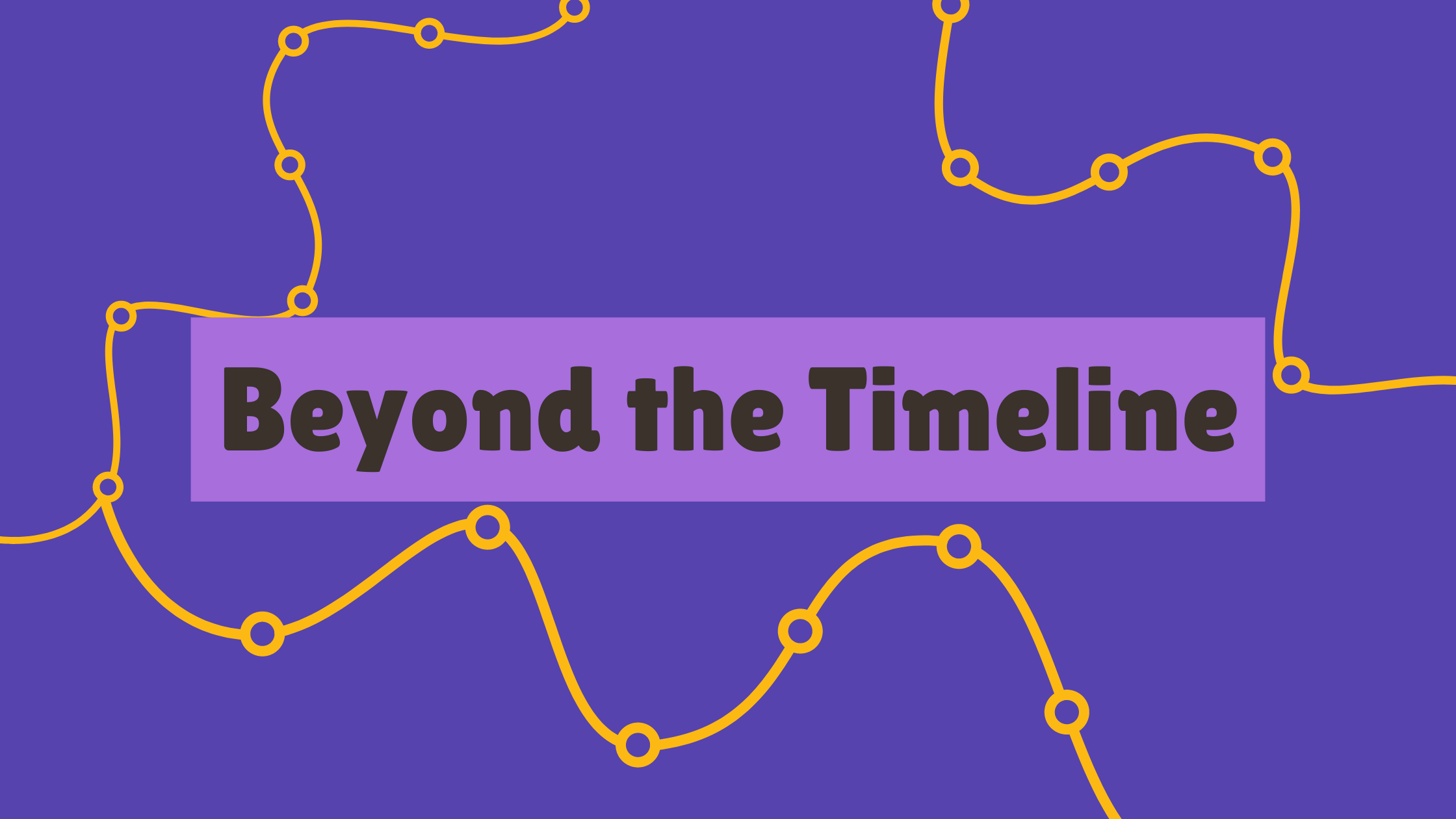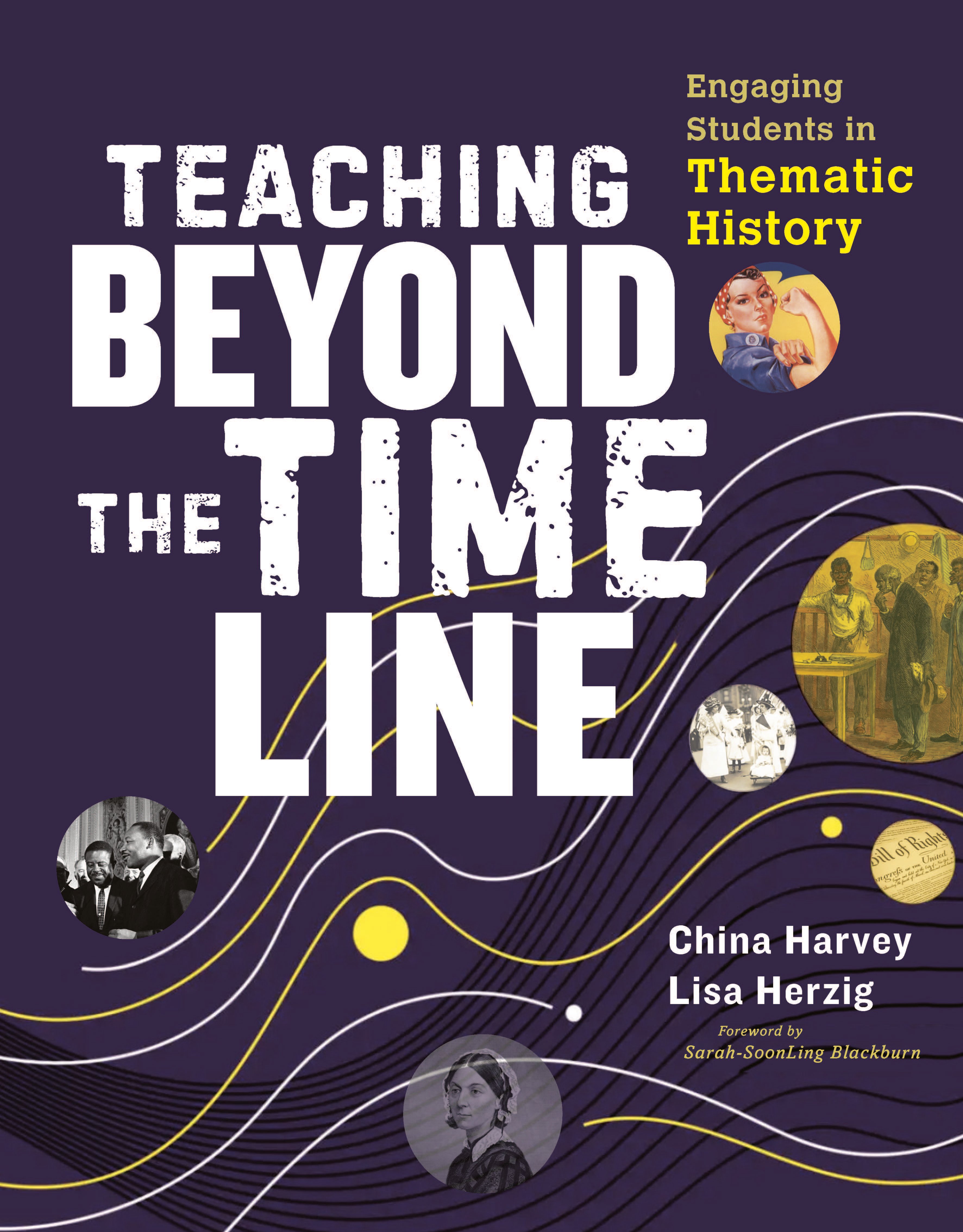
The following is an adapted excerpt from China Harvey and Lisa Herzig’s forthcoming Teaching Beyond the Timeline.
***
Teacher: “IN FOURTEEN HUNDRED NINETY-TWO . . .”
Students: “Columbus sailed the ocean blue.”
A typical U.S. history course might begin this way, with the teacher calling out a familiar phrase from the students’ elementary education, and the students responding in rote fashion. As the course progresses, the teacher moves through the content chronologically, often starting with the colonial period and ending with the Cold War, centering presidential elections and wars as pivotal events. Often the majority of kids in the class sit and wonder, “Why do I need to know this?”
The traditional chronological approach to teaching history does not always facilitate engagement in the subject matter. History often becomes a string of dates, events, and names that students are required to memorize without much understanding of why they need to know that material or how it may be relevant to their lives today. This lack of engagement can make it difficult for a teacher to help students develop skills of critical thinking, reading comprehension, and argumentative writing because the students simply do not have a connection to the material.
 We believe a more fundamental shift in the way we teach history needs to occur for our students to be truly engaged and see how U.S. history is relevant to their own lives. A genuine interest in the subject can make students stronger learners—when they engage and see the relevance of events in the past, they think critically about it; their brains are ripe for skill development. Moving from simple rote memorization to requiring students to meaningfully connect historical concepts, people, and events using patterns of comparison, causation, and elements of continuity and change over time is more valuable and useful to them overall.
We believe a more fundamental shift in the way we teach history needs to occur for our students to be truly engaged and see how U.S. history is relevant to their own lives. A genuine interest in the subject can make students stronger learners—when they engage and see the relevance of events in the past, they think critically about it; their brains are ripe for skill development. Moving from simple rote memorization to requiring students to meaningfully connect historical concepts, people, and events using patterns of comparison, causation, and elements of continuity and change over time is more valuable and useful to them overall.
After years of reflection, we abandoned our traditional, chronological approach in favor of teaching history thematically. We organized the course and each unit around central themes designed to capture students’ interest and ensure our curriculum was engaging, inclusive, and relevant to all our students, a challenge we found increasingly more difficult to overcome with a chronological approach. The benefits to this shift to thematic teaching were exponential for our students and for ourselves.
Engagement
Teaching history thematically can be a much more engaging way to structure a course. When teachers are no longer confined by chronology, the study of history becomes less about memorizing seemingly random dates and events and more about tracing particular ideas and movements across periods of time. This deeper dive into the content also allows students more opportunities to practice the historical thinking skills we value in our courses: understanding contextualization, recognizing the cause-and-effect relationship between events, and identifying continuity and change over time. Students can think much more critically about the events we teach when they have a broader understanding of their place in history.
Relevance
We instruct our students at a unique point in their lives, when they are exploring their own political values and beliefs and developing as civic-minded, passionate young adults. They are paying close attention to major world and U.S. events that are unfolding before them. They want to know why things are the way they are and how we got here. Teaching thematically facilitates the connection between past and present events as it gives teachers the flexibility to start in the modern era. Themes can be built around current events, making the present day the foundation for the course where students dive into the past to uncover how we got here, creating a much more relevant experience for our students. They can see how history impacts their world today, giving them a much greater appreciation for the study of history.
Inclusivity
Our students are diverse in culture, language, gender, ancestry, and economic background. They want, and deserve, to see themselves reflected in the history they are learning. They want to learn about those who have been left out of history textbooks, uncovering contributions of people like them. A thematic approach allows the teacher to center the class around these voices, providing mirrors for students to see themselves reflected in the curriculum and windows through which students can learn about people with backgrounds different from their own.
 Not only does a thematic approach benefit students, it also makes our job as a teacher much more enjoyable. Teachers can create themes that draw upon their own interests, as well as their students’ interests: art, economics, social justice, literature, sports. Bringing our own passions into the classroom keeps us engaged and helps bring history to life for our students. Students know when teachers are excited about what they teach, and that excitement is contagious. If we love what we are teaching, our students will be all in, ready to uncover the past with us.
Not only does a thematic approach benefit students, it also makes our job as a teacher much more enjoyable. Teachers can create themes that draw upon their own interests, as well as their students’ interests: art, economics, social justice, literature, sports. Bringing our own passions into the classroom keeps us engaged and helps bring history to life for our students. Students know when teachers are excited about what they teach, and that excitement is contagious. If we love what we are teaching, our students will be all in, ready to uncover the past with us.
***
Teaching Beyond the Timeline released on April 16, 2024.

China Harvey (L) is currently a high school social studies teacher and has served as instructional coach and teacher on special assignment, developing curriculum, leading professional development trainings, and helping to write the course of study for her district’s U.S. History course. She has led professional development workshops for teachers across the country, serving as a Teaching Fellow for Brown University’s The Choices Program, facilitating teacher cohorts for Learning for Justice, and working with elementary teachers and the community on moving beyond the myths surrounding Native American history.
Lisa Herzig (R) teaches high school students in World History, U.S. History, and AP U.S. History. Selected as a teacher on special assignment for her department, she was also a district finalist for “Teacher of the Year” award. Over the span of her career, she has helped create district-wide assessments, worked on curriculum development, and has written courses of study for World and U.S. History.
Related Reading

The following is an adapted excerpt from Teaching Beyond the Timeline by China Harvey and Lisa Herzig.


